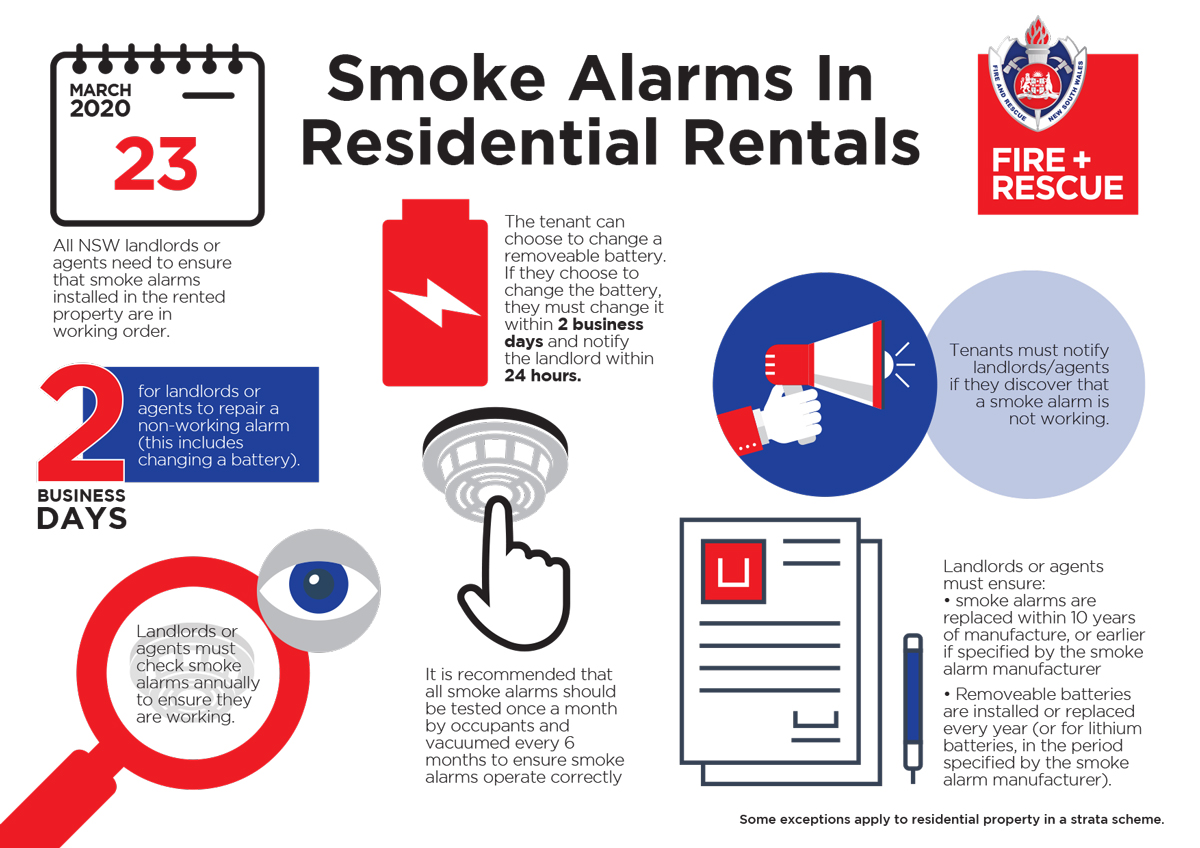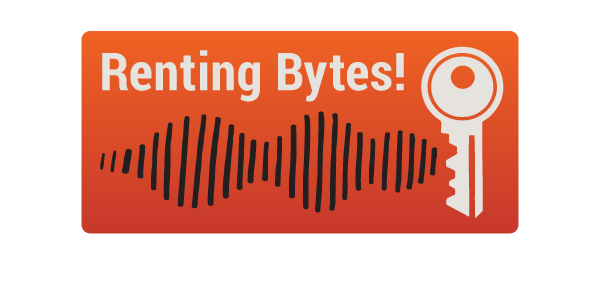Smoke alarms
As a tenant you have rights under the Residential Tenancies Act 2010 and Residential Tenancies Regulation 2019. This factsheet outlines the law about smoke alarms in NSW – including the landlord’s obligation to install and maintain smoke alarms, the tenant’s obligation to inform the landlord of problems with the smoke alarms, and when the tenant may change the batteries of smoke alarms.
Smoke alarms are mentioned in your residential tenancy agreement under “Important Information”, in clauses 42–44 and in the condition report. Check the condition report for what the landlord says about smoke alarms.
Landlords must install smoke alarms
It is a term of every residential tenancy agreement that the landlord will install and maintain smoke alarms according to the standards in the Environmental Planning and Assessment Regulation 2000.
Types of buildings and types of alarms
All smoke alarms installed from 1 May 2017 must comply with Australian Standard AS 3786:2014. The power supply and location of smoke alarms depends on the type of building.
Private dwellings
This includes:
- detached houses, terrace houses, town houses and villas
- apartments, units and flats
- caretakers flats and flats above shops
- relocatable homes
Alarms may be hard-wired to mains electricity supply or battery powered (landlord’s choice).
They must be installed on every storey. On storeys with bedrooms, an alarm must be located on or near the ceiling in every corridor associated with a bedroom. The landlord may have to install one or more alarms.
On storeys without bedrooms, a smoke alarm must be installed in the path of travel that people would likely take to leave the building.
Boarding houses
Smoke alarms must be hard-wired to mains electricity supply, or powered by a non-removable 10-year long-life battery (landlord’s choice).
They must be installed on every storey. On storeys with bedrooms, a smoke alarm must be installed in each bedroom, and in each corridor associated with bedrooms.
On storeys without bedrooms, a smoke alarm must be installed in the path of travel that people would likely take to leave the building.
There are additional requirements and standards for smoke alarms in large boarding houses (‘Class 3’ buildings). See the NSW Department of Planning and Infrastructure website (planning.nsw.gov.au) for more information. Search for Smoke Alarm Advisory Note and Planning Circular.
Old smoke alarms
If an old alarm stops working or is removed, the landlord must replace it with an alarm that complies with the standard.
Landlords must replace smoke alarms according to the manufacturer’s instructions or every 10 years whichever is soonest. If you are a public housing tenant, a tenant of the Aboriginal Housing Office or a community housing tenant where the Land and Housing Corporation (LAHC) is responsible for maintaining the property this requirement will only apply after 23 March 2021. However, all other requirements relating to smoke alarms currently apply.
Interfering with a smoke alarm
It is a term of every residential tenancy agreement that neither the landlord nor the tenant shall interfere with the operation of a smoke alarm without a reasonable excuse.
If a smoke alarm gives ‘false alarms’ (e.g. triggered by cooking), do not remove the battery or disable it. Contact the landlord/agent and ask that the alarm be moved to a more suitable location or replaced with a different style of alarm.
Replacing smoke alarm batteries
The landlord must replace the battery annually. The landlord must replace the battery within two business days of notification by the tenant. The tenant must inform the landlord of problems with smoke alarms. In some circumstances you can replace the battery. For example, a battery powered alarm in non-strata premises:
- Notify the landlord that you will replace the battery
- Replace the battery within 2 business days of that notice
- Notify the landlord you have done so within 24 hours
Communication with the landlord should be in writing.
Things that make a difference to replacing batteries in smoke alarms include:
- whether the smoke alarm is hard-wired or battery powered
- whether the premises are a lot in a strata plan
- whether the owners corporation is responsible for upkeep of the alarm
- whether a hard-wired alarm has a removable back up battery
Some alarms need an electrician for any maintenance.
There is a table of examples published by NSW Fair Trading at fairtrading.nsw.gov.au/housing-and-property/renting/new-residential-tenancy-laws/key-changes-to-smoke-alarm-requirements-for-rented-homes
Reimbursement?
The landlord should pay your expenses in replacing a battery within seven days of written notice of the expenses. Include details and receipts or invoices with your notice.
If you are not paid your expenses, you can apply to the Tribunal for an order for payment. The time limit is three months from the seventh day after sending your written notice (above).
NSW Fire and Rescue provides the Smoke Alarm and Battery Replacement service for people over 65 or people with disability who have no one to assist them. Contact your local fire station for information.
Landlord’s access to premises
A landlord/agent/contractor, having given two business days notice, can enter premises to:
- install smoke alarms
- maintain and repair smoke alarms – “repair” includes replacing batteries
Disputes about smoke alarms
You can apply to the NSW Civil and Administrative Tribunal (NCAT) for an order for the landlord to:
- install smoke alarms
- maintain and repair smoke alarms
- stop interfering with the operation of a smoke alarm
- repay your expenses for maintenance of a smoke alarm
The landlord can also apply to the Tribunal for an order if you interfere with the operation of a smoke alarm or refuse to change the battery.
See Factsheet 11: NSW Civil and Administrative Tribunal.
If you are not certain about what to do about a smoke alarm problem or dispute, contact your local Tenants’ Advice and Advocacy Service for assistance.
Smoke alarms for people with hearing impairment
The smoke alarms required by the regulation issue an audible alarm. Devices such as flashing lights and vibrating pillow pads can be connected to some smoke alarms. Ask your landlord to install a compatible alarm.
See also
- Factsheet 6: Repairs and maintenance
- Factsheet 8: Privacy and access
- Factsheet 11: NSW Civil and Administrative Tribunal
- Factsheet 23: Utilities
- Smoke Alarms Help Line: 1300 858 812
- Better Hearing Australia – Sydney Branch: betterhearingsydney.org.au
- Fire and Rescue NSW: phone 02 9265 2999, fire.nsw.gov.au
- Fire and Rescue NSW residential smoke alarms graphic (pdf):

Factsheet updated September 2020
This factsheet is intended as a guide to the law and should not be used as a substitute for legal advice. It applies to people who live in, or are affected by, the law as it applies in New South Wales, Australia. © Tenants’ Union of NSW.




